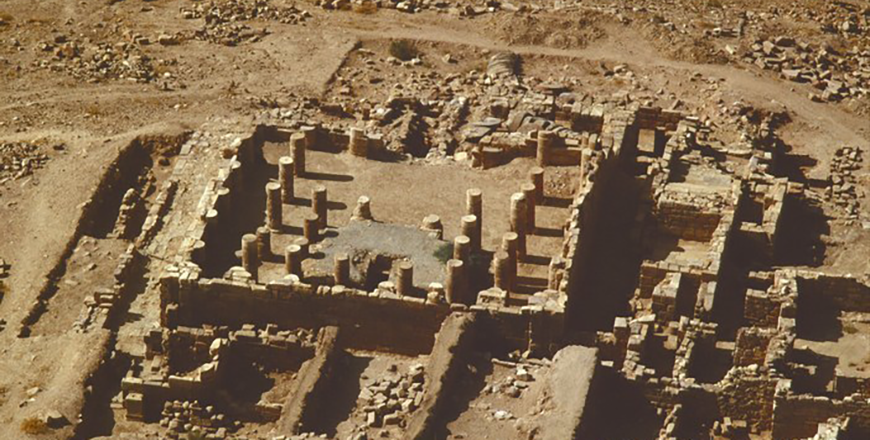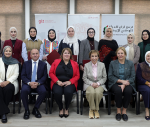You are here
Lecture highlights Nabataeans’ water mastery, pottery legacy
By Saeb Rawashdeh - Apr 10,2025 - Last updated at Apr 10,2025

An aerial view of the Temple of the Winged Lions (Photo courtesy of ACOR)
AMMAN — The ancient Nabataeans were well known for their hydraulic system, water storage and irrigation in a very arid area of Petra and its hinterland.
They combined the best Greco-Roman practices with water preservation experiences in desert areas of north-western Arabia and Sinai.
The Nabataeans were pioneers in hydraulic engineering, employing techniques that allowed more effective water distribution and storage across vast desert landscapes.
“Throughout history, different cultures have made significant advancements in engineering, particularly in developing systems that facilitated water management and distribution,” noted Yazan Tall at the lecture “The Nabataean Innovative Techniques: Water Systems, Pottery and Queries”, held on Tuesday at American Centre of Research.
The event attracted a number of academics, professors and directors of Jordanian and foreign archaeological missions.
These technological innovations were vital for creating effective water systems in ancient times, and similar water systems were implemented in other parts of the Mediterranean by Greco-Romans.
Water collection and conservation was particularly important in societies that lived in extremely dry weather like the one in Petra during the Nabataean Kingdom.
“Water systems were not just functional: they played crucial role in the social and economic activities of Nabataean society influencing trade and settlement patterns,” Tall explained.
The development of the Nabataean pottery was interconnected with water storage and artistry in pottery had its significant social role.
The Nabataeans skilfully utilised local resources enhancing their pottery's durability and aesthetic appeal, Tall said, adding that it showcased their environmental adaptability.
“By comparing Nabataean pottery with that of other Near Eastern cultures, we can glean insights into cross-cultural influences and shared techniques,” Tall said, noting that exploring traditional methods of forming and firing pottery provides deeper understanding of the technical advancements in the ancient Near East.
Meanwhile, pottery often played a significant role in trade, serving as both a commodity and medium for cultural exchange among ancient societies.
“The variety of pottery styles across different civilisations illustrated the rich tapestry of cultural identities and artistic expressions in the region,” Tall underlined.
The significance of the pottery also testified about the talent of the craftsman and the design was influenced by the local environment. Another major influence for the Nabataean pottery was the trade route that went from the bottom of the Arabian Peninsula all the way to Gaza, Mediterranean ports and Damascus.
“Pottery also reflected the Nabataean cultural and ethnic identity,” Tall said, adding that the Nabataean queries influenced monumental architecture inside Petra.
The Nabataeans transported stones from queries by dragging them with ropes due to its heaviness.
For Tall, the most challenging part of his study was how to reconstruct the Nabataean hydraulic system and water management.
“We might have tour guides specialised in water management because tourists usually visit The Treasury and a few other spots overlooking other sites that are equally important,” Tall underlined, adding: “We face the lack of visual interpretation of Petra hydraulic system as well as interactive signage.”
This type of tolls would connect researchers, tourists and students who flock Petra and its hinterland Tall concluded.















